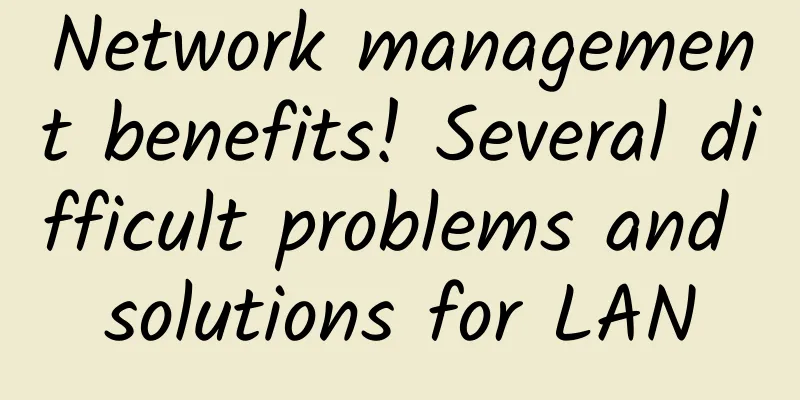The only way an OSPF router cannot become a DR/BDR is: DR priority = 0

|
After learning the DR/BDR selection rules in OSPF, many people find it very simple. However, when doing experiments, they find that sometimes the selected DR/BDR is not what they expected, and they feel confused: Is there something wrong with the selection rules they learned? Actually, no. There is another important point of knowledge in the selection of DR/BDR: DR/BDR cannot be preempted! But before learning new knowledge points, let's review the selection rules of DR/BDR! DR/BDR election rules We all know that DR/BDR is a property of a router interface. It can only indicate the role of a router on a certain network segment, and cannot represent the entire router. Therefore, the selection of DR/BDR is based on a certain network segment. For example, in the multi-point access topology below, there are four routers in the same network segment 10.1.1.0/24. DR and BDR will be selected on this network segment. Initially, the four routers will consider themselves as DR/BDR, and will set the DR and BDR marks in the messages they send. When a router receives a packet with a higher DR priority than its own, it stops declaring itself as DR/BDR and instead declares the router with a higher DR priority as DR/BDR. Select based on DR priority If a router receives a packet with the same DR priority, it will compare the Router IDs. If the Router ID of the other party is larger than its own, it will declare the other party as the DR/BDR. Select by Router ID The above is the DR/BDR selection rule:
Non-preemptibility of DR/BDR selection If everything follows the DR/BDR selection rules, there will be no doubts, and the world will be peaceful. However, when we check the roles of DR and BDR, we often see that the router that becomes DR/BDR is not what we expect. For example, in the figure below, there are 3 routers. Initially, R3 has a DR priority of 30, the largest value, so it will be selected as the DR on this network segment; R2 has the second highest priority, so it will be selected as the BDR on this network segment. DR/BDR If we add another router R2 to the network, and the DR priority is 50, what will happen? Will R2 become the new DR and R3 become the BDR? Add a new router R2 In fact, at this time, nothing will change on the network, R3 still exists as DR, and R1 still exists as BDR! If you check the status of the routers at this time, you will find that the DR/BDR selection rule is wrong! No changes to the network In fact, the DR/BDR selection rules mentioned above are not wrong. The reason for this situation is that the selection of DR/BDR needs to follow another rule: the selection of DR/BDR is lifelong and will not be preempted! This means that on a network segment, once a DR/BDR is selected, it will remain the DR/BDR until it fails, and will not be replaced by a later router with a higher priority. Why do this? OSPF's approach actually meets the actual network usage requirements: stability overrides everything. When switching DR/BDR, LSA needs to be re-advertised, and the network will be temporarily blocked, which is not allowed in actual work. If a high-priority router joins the network, switching DR/BDR may cause network oscillation. For example, if the newly added OSPF router is unstable, sometimes up and sometimes down, the entire network will be unusable. Therefore, when OSPF was designed, this was taken into consideration. Once the DR/BDR is selected, it will not change! We encountered this situation in the laboratory. Don't worry, just clear the OSPF process of all routers and let them reselect! But in the actual network, you can't clear the OSPF process casually! And many times, we encounter the situation that the DR/BDR is not the router we expect, because we are slow to type the command. Initially, a router will wait for 40 seconds (by default) before selecting a DR/BDR. If a router with a high DR priority joins the network after 40 seconds, it will not have a chance to become a DR/BDR! Routers with a DR priority of 0 do not participate in DR/BDR selection. After reading the above description, you should be able to understand that even if the DR priority of a router is the highest, it may not necessarily become a DR/BDR. If you want an OSPF router to always become the DR/BDR of a certain network segment, it will not work by modifying the DR priority and Router ID. In fact, if you want a router to always become a DR, there is only one way: set the DR priority of other OSPF routers to 0. When the DR priority of a router is set to 0, it will not participate in the selection of DR/BDR on this network segment, and its role will always be DR Other. DR priority is set to 0 Of course, the risk of this approach is that if the DR router fails, the entire network will be paralyzed and there will be no way to forward packets. This is because DR Others can only exchange routing information with DRs, and DR Others do not exchange routing information with each other. Summarize After the above description, you should have understood the DR/BDR selection mechanism and the reasons why preemption is not possible. Let me make a brief summary:
|
<<: 5G is here. How to build the emerging edge DCs?
>>: What are LACP and PAGP? What are the differences?
Recommend
6G is coming, how will the business change?
The next generation (6G) transmission technology ...
Is 5G only about fast internet speed? Is it a rigid demand or a false demand?
In 2019, we thought 5G was a distant thing, but i...
Seven key points! Understand the "Threat Information Blue Report" released by Weibu Online and China Academy of Information and Communications Technology
On December 3, 2021, the Security Research Instit...
Dwidc: Hubei 400G high-defense VPS starts at 12 yuan per month, high-defense independent server starts at 385 yuan per month
dwidc (Dawang Data) is the site of Shaanxi Securi...
Shocking! 4G short videos exploded, 5G will eliminate pictures and texts!
The 2G era is an era of text messages flying ever...
Tong Yongyue of Yunfan Accelerator: In 2017, we hope to become the standard CDN in the streaming media field
【51CTO.com original article】With the rapid rise o...
CUBECLOUD VPS Hosting 12% off, Hong Kong CN2 GIA/Los Angeles CN2 GIA/AS4837 optional
CUBECLOUD has launched a promotional activity cal...
During the COVID-19 pandemic, F5 ensures safe and stable remote work for Lancashire hospitals in the UK
Lancashire Teaching Hospitals NHS Foundation Trus...
BandwagonHost releases Double 11 discount code, 10% discount on all VPS for life, starting from $44.49 per year
BandwagonHost has also released a Double 11 disco...
Four leading geese: the starting point for large-scale commercial use of 5G to B
Suddenly, 5G has truly come into our lives. With ...
Breaking the “lack of core and soul”, my country successfully developed 5G millimeter wave chips
According to Science and Technology Daily, on Jun...
Yunnan Yuxi and Huawei Enterprise Cloud deepen cooperation
On March 30, 2017, the People's Government of...
How to integrate data protection in the data center
Data protection systems can sometimes seem like t...
Relax and have fun during the Dragon Boat Festival. WiFi signal must be strong. Here's how to adjust it
During the Dragon Boat Festival holiday, there ar...
Lenovo Debuts at Microsoft IoT Conference, Driving Business Intelligence Innovation with Smart IoT Devices
On December 3, the highly anticipated 2019 Micros...









